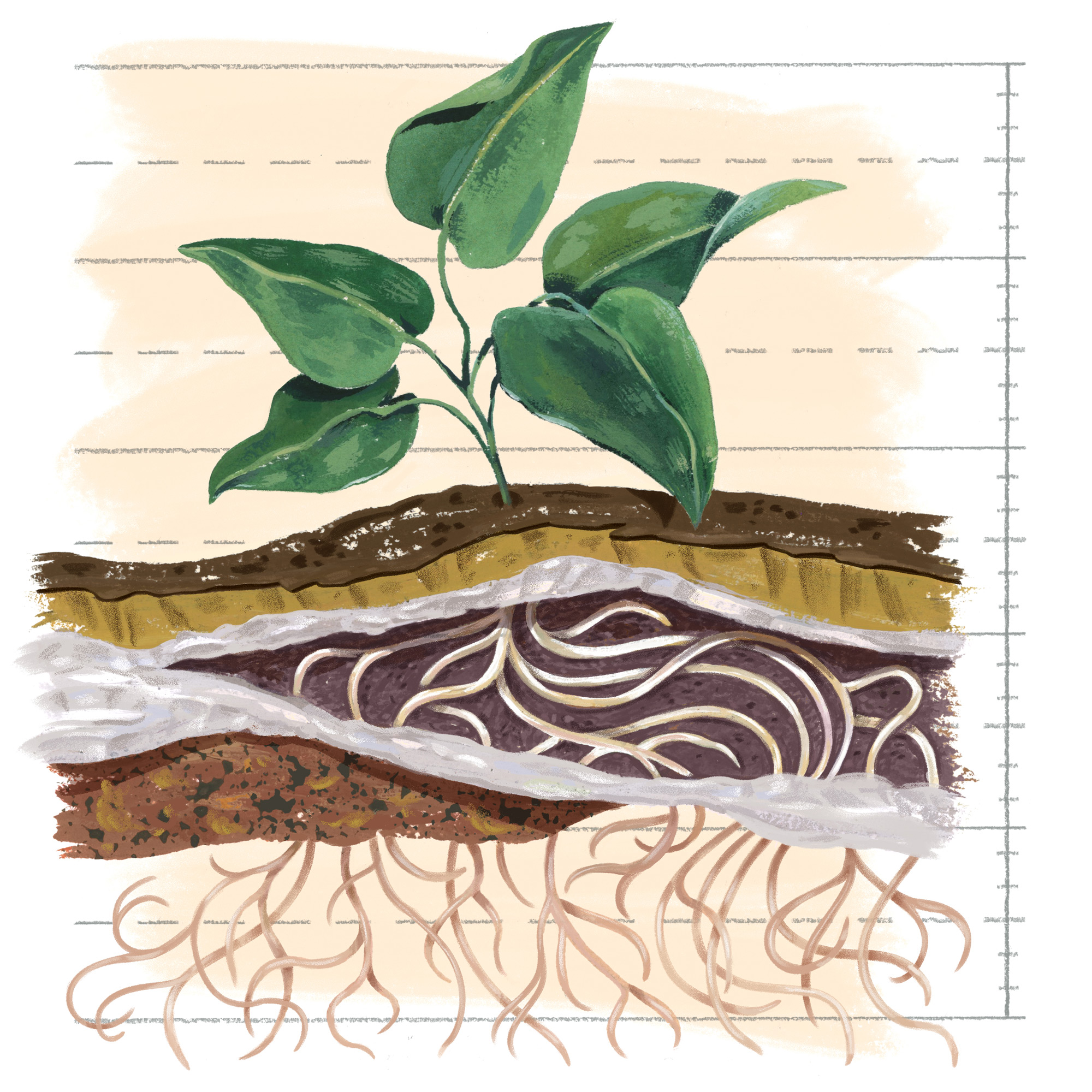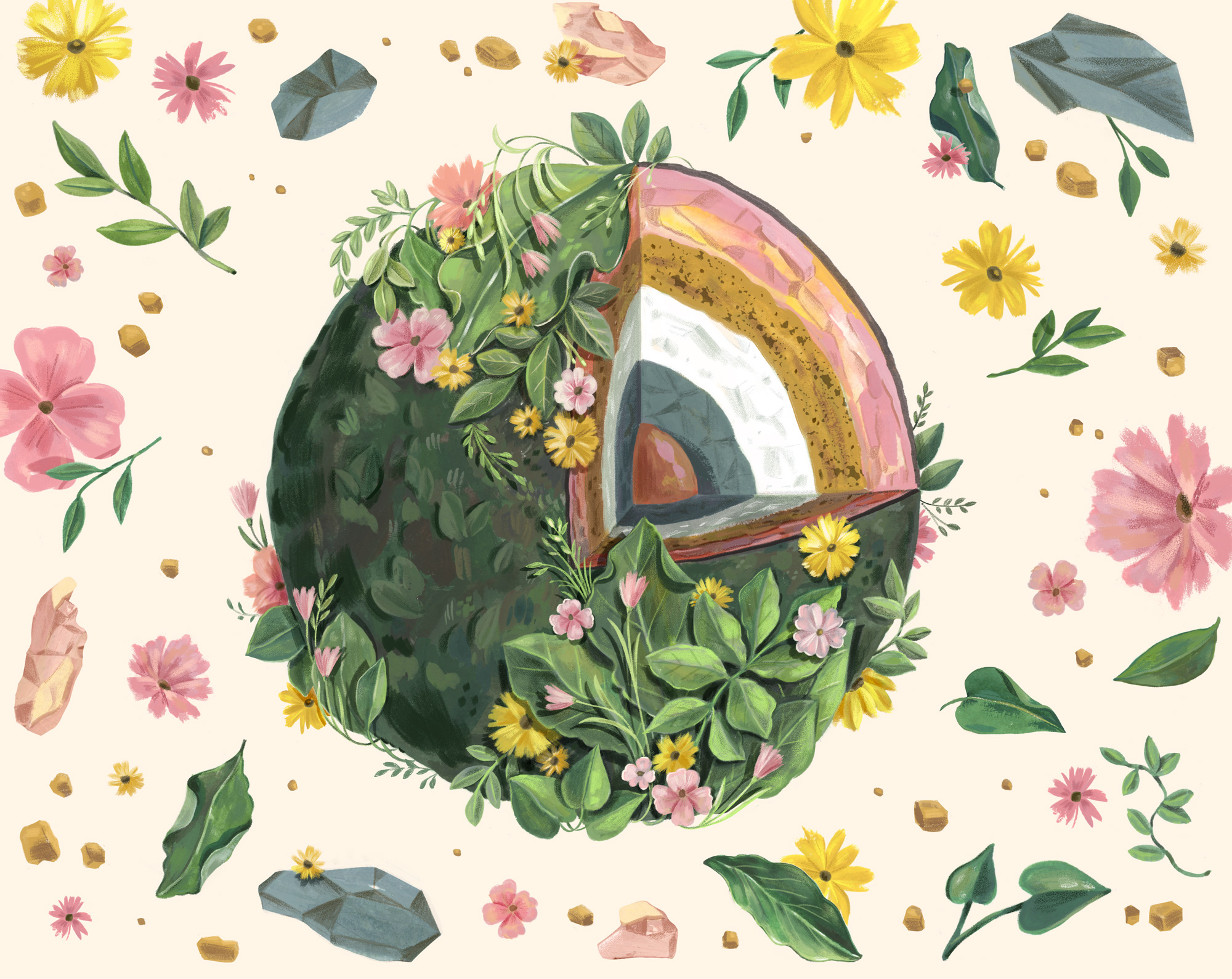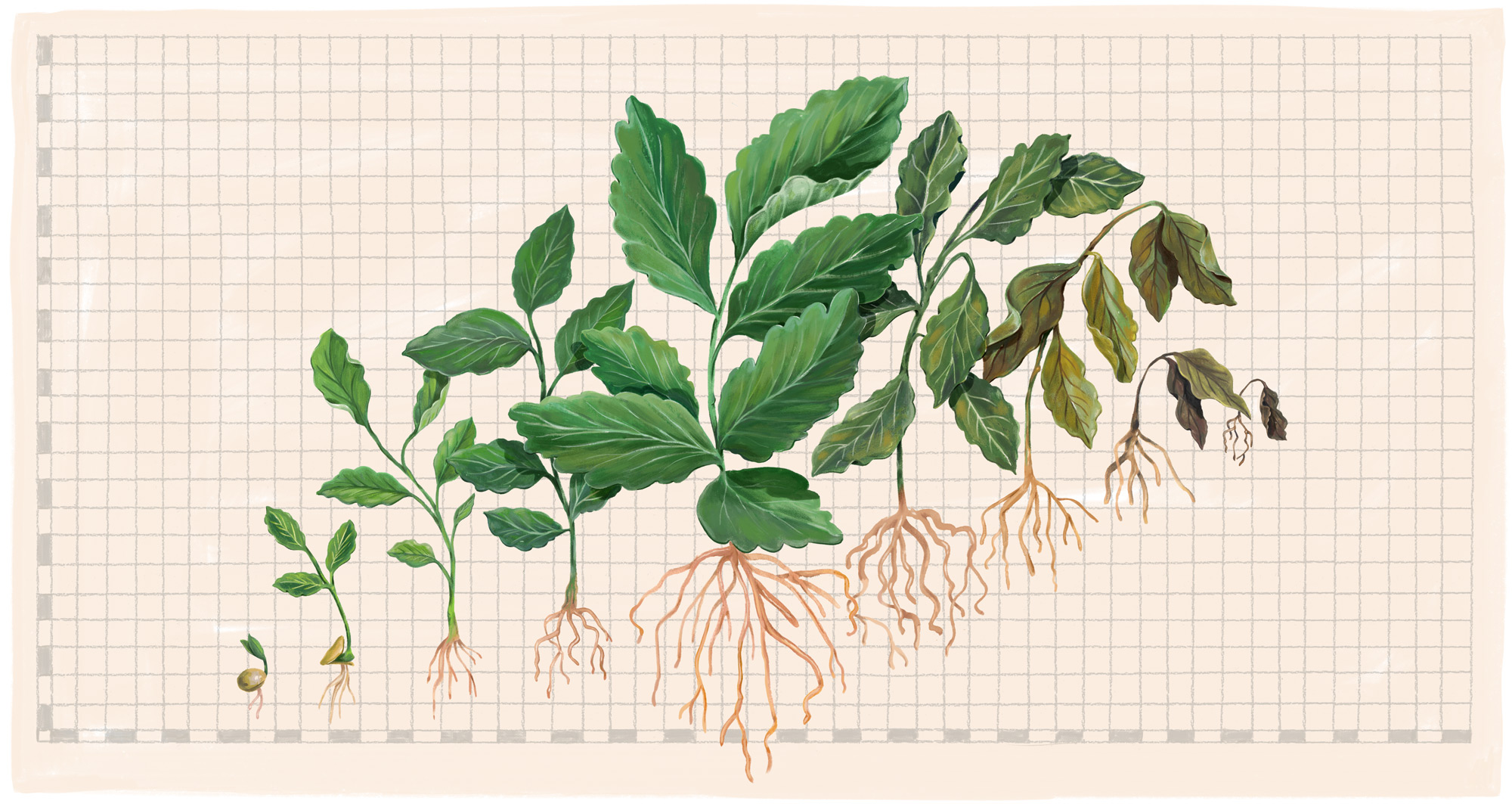The World at Our Feet
It’s our tiny oasis in a vast universe, and it’s feeling fragile. Five faculty give us the latest on Earth and its prospects.
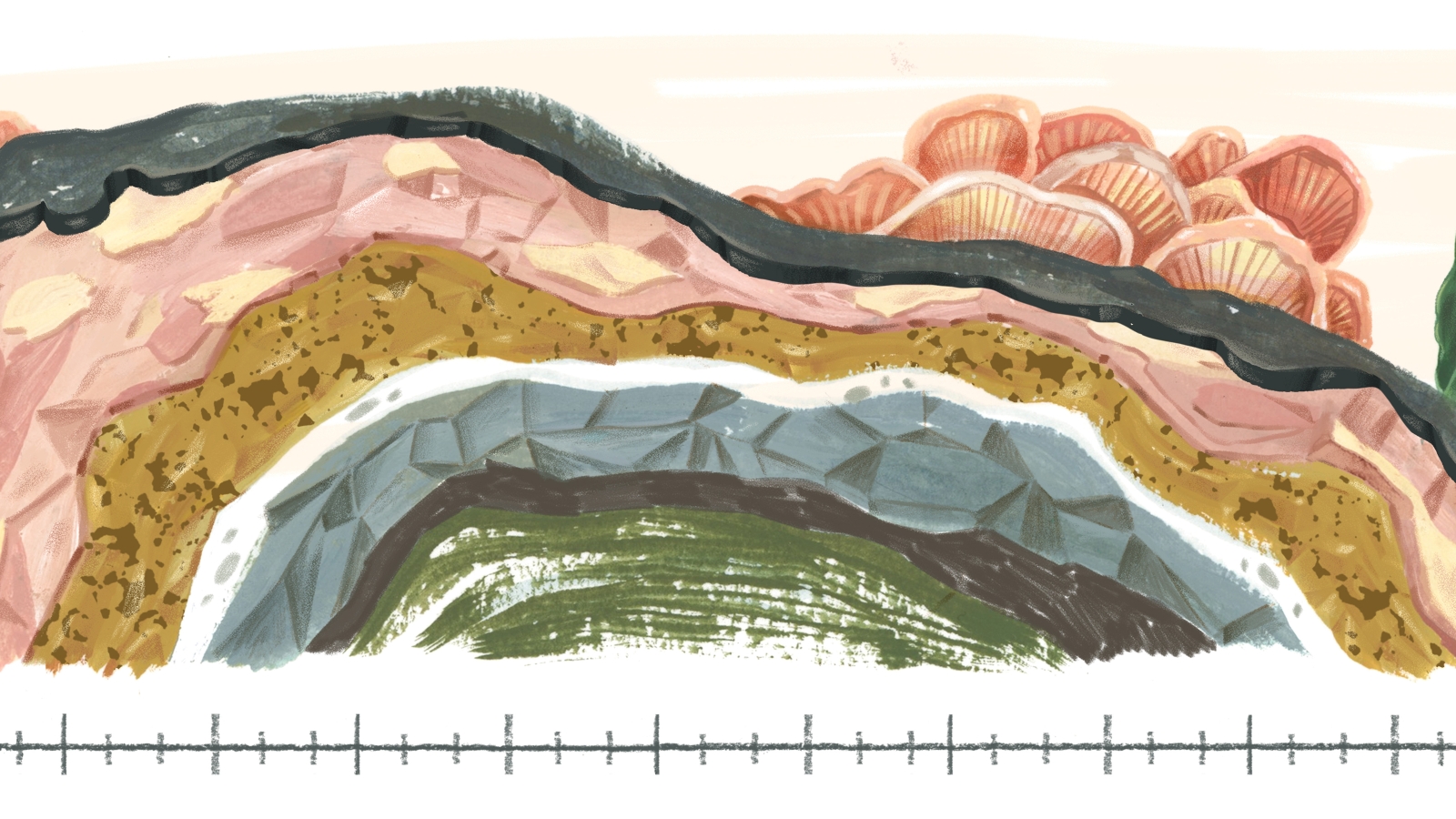
Greetings, Earthling!
Our habitat is a spheroid mostly made up of iron, oxygen, silicon, and magnesium that masses about 6.6 sextillion tons. Seventy-one percent of its surface is covered with water, and its surface temperatures can vary by more than 260 degrees Fahrenheit. Earth’s gravity holds us to it even as it spins us at about 1,000 miles an hour. It provides us with air to breathe, water to drink, soil in which to grow crops, and wood, stone, and clay to build our shelters.
For much of human history, we didn’t really know how lucky we are. Many ancient cultures, including Greek, Persian, Tibetan, Buddhist, and Hindu, thought of small-e earth as one of the basic elements. It was the solid one: reliable, maybe a little dull. Earth has also long been seen as a mother, giver, sustainer. There was uncertainty, from phenomena like earthquakes and volcanoes, but generally speaking you could rely on earth to be there for you.
Humans have known for a long time that there was more than the earth beneath our feet—that there was, in fact, a big-e Earth—but it took a while before we figured out our place in relation to the sun and stars. Then space travel allowed us to see our whole home, surrounded by dark nothingness.
Humans have now mapped the universe out to 2 billion light-years, but Earth is still the only place known to harbor life. “It used to be said that Pluto is a misfit,” said Alan Stern, the leader of NASA’s New Horizons mission to the Pluto system and the Kuiper Belt. “But now we know Earth is the misfit.”
We have learned that we can change the Earth in major ways—unintentionally and unpredictably. Two centuries ago the deforestation of the east coast of the U.S. resulted in sediments washing down to fill the flood plains of rivers and the creation of coastal marshes. On the other hand, dams and reservoirs are holding back so much dirt that the Mississippi delta is now starved of sediment. At this point, human activity has added billions of tons of carbon to the atmosphere, raised global temperatures and sea levels, and increased the acidity of the ocean.
Every day, we unthinkingly count on the Earth to hold us up, but its long-term reliability now seems questionable. Type “Earth” into a Google search, and the second most frequent question is, “Is Earth gonna be destroyed?”
“Geological epochs conventionally end with some sort of great catastrophe, often an extinction event, right? Extinction events are the great horizon lines,” says Jared Farmer, Professor of History. “And I guess I’m much more interested in thinking about long durations of time and imagining a future without the end of the world.”
To protect the Earth, we have to get up close and personal with earth: the rock, soil, sediment, clay, and sand that surround us. We also need to study how it interacts with its fellow ancient elements of air, fire, and water, and with all the terrestrials who make their homes here. We spoke to Penn Arts & Sciences researchers who study the Earth’s geological past, its surface activity, and its soils and life forms, to learn how Earth and its Earthlings can get along better.
Earth, Climate, and Deep Time
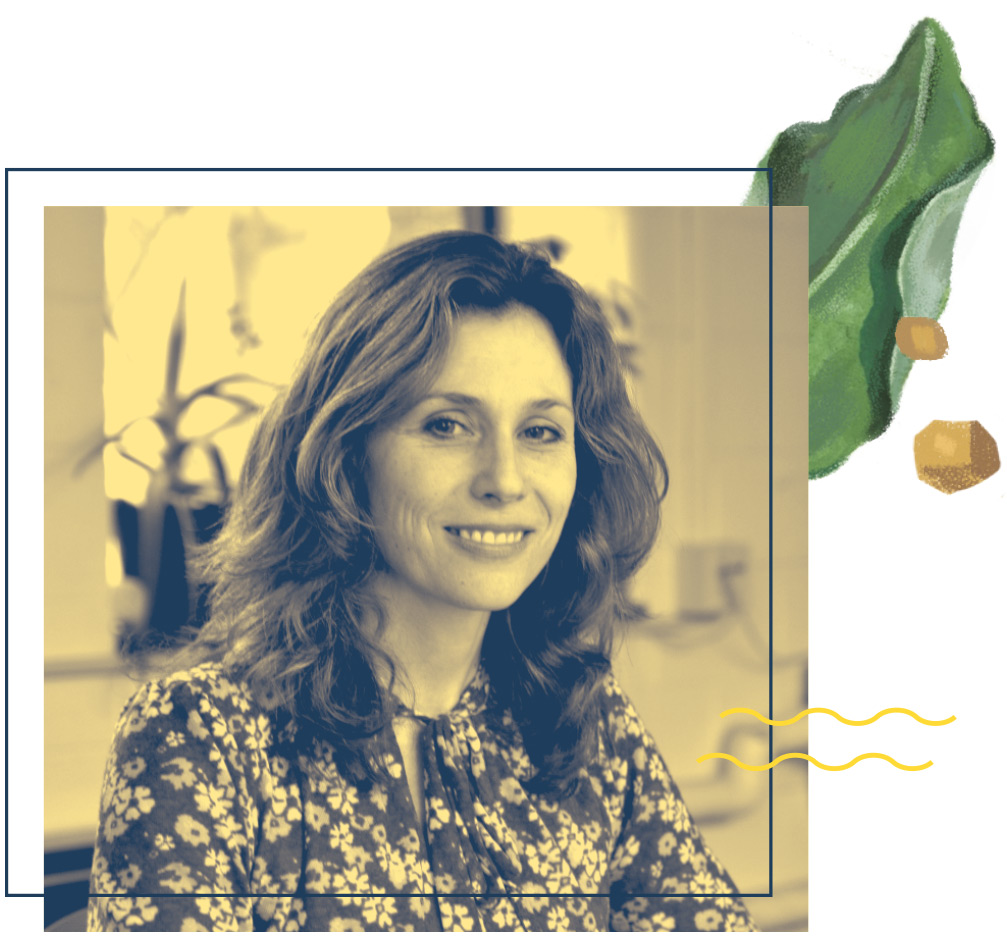
Jane Dmochowski, Senior Lecturer in Earth and Environmental Science
Human imagination, wired as it is within a biological timespan measurable in decades, can hit a wall when it comes to comprehending the vast expanse of time that comprises the history of the Earth. As Jane Dmochowski notes, Earth’s timeline starts to get specific beginning around 540 million years ago, when the predecessors to all animal life emerged. But Earth’s history begins more than 4 billion years earlier.
Dmochowski, Senior Lecturer in Earth and Environmental Science, sometimes relies on a visual aid to help her students grasp what time on this kind of scale means. “In history class, you learn about part of this ball of yarn,” she tells them. Depending on the size of the ball of yarn, that part might be 1/100th of an inch, representing the span of time from when Rome ruled the Western world to the present day. “But here,” she explains, “we’re going to learn about the whole ball.”
The limits of our imagination matter when it comes to making sense of the geologic record of Earth’s climate. Ice core samples, for example, document cycles of warming over the past million years. But geologically speaking, a million-year period is just a snapshot that tells us little about Earth’s climate in deep time—a term generally credited to the writer John McPhee, to describe the vastness of the Earth’s past.
Using a variety of tools and clues—a sort of forensic reconstruction—Earth scientists have been able to sketch out a deep-time perspective on Earth’s climate. Dmochowski and David A.D. Evans, a professor of earth and planetary sciences at Yale, coauthored a chapter in the new book, Timescales: Thinking Across Ecological Temporalities, co-edited by Bethany Wiggin, Associate Professor of German Languages and Literatures and Founding Director of the Penn Program in Environmental Humanities. Dmochowski and Evans describe a climate characterized by “a remarkable stabilizing feedback in spite of the sun growing more luminous through the last four billion years.” This feedback process involves capture and deposition of carbon dioxide from the atmosphere in sedimentary rocks. In hotter climates, more carbon dioxide gets removed, with less removed in cooler climates—resulting in a kind of check on warming or cooling trends and promoting a long-term stable state.
For life on Earth today, the problem is that adaptation takes time.
There have been departures from the stable state, such as intense, prolonged ice ages. We also know of one relatively recent (geologically speaking) warming event: the Paleo-Eocene Thermal Maximum of 55 million years ago. Dmochowski says the rapid release of carbon into the atmosphere that occurred during this period is unlike anything else discovered in the last 90 million years of Earth’s history—until the present.
Dmochowski notes that as a result of humans burning fossil fuels, “as we unfortunately do,” 500 billion tons of carbon have been released into the atmosphere, global temperatures are higher, sea levels have risen, and the ocean has undergone a 30 percent increase in acidity. “These changes have occurred at a pace that’s faster than anything that we have seen in the geologic record,” she says. And for life on Earth today, the problem, as Dmochowski notes, is that “adaptation takes time.”
The implications of such rapid change are, to Dmochowski, clear. “We have to be realistic and say, this is something we have to adapt to and mitigate. If you take the very, very, very, very long-term view, some people could say, ‘Well, eventually the sun is going to become a red giant and as it consumes the inner planets, Earth will be incredibly hot.’ That’s clearly not the timescale we’re considering here. I’m a big believer in understanding our role as humans in our climate as well as possible, so that we impact it as little as possible.” — Loraine Terrell
Living on the Edge
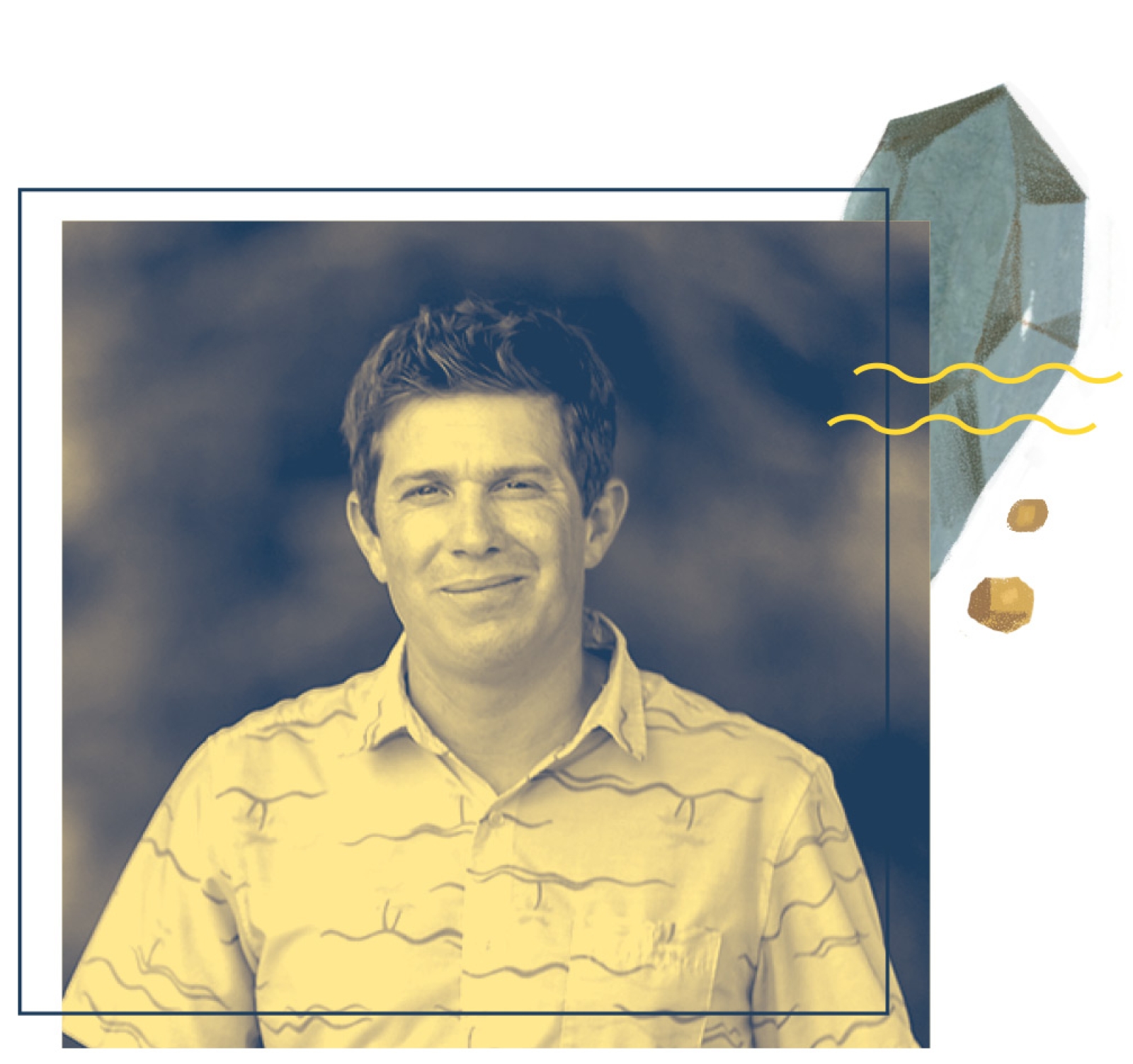
Douglas Jerolmack, Professor of Earth and Environmental Science
Douglas Jerolmack is passionate about landscapes and surfing, so it makes sense that the geophysicist studies the places where earth—dirt, sand, and rock—collides with water or air. That intersection is not as stable as it might seem, he says, and that instability can have serious consequences.
Jerolmack is a professor of earth and environmental science, and his mission is to understand and predict when and how earth will move. “The surface of the Earth is an interface between granular material and a fluid,” he says. “That simple premise has profound consequences. We’re living right on this incredibly razor-sharp discontinuity. Everything we do plays out across that interface, which we take for granted until suddenly it rains or it shakes a little bit, and then it becomes like water in a cup.”
Air and water both behave like fluids in certain states, and earth itself can act like a fluid at times. When that happens, the results are often catastrophic: landslides or flooding or more insidious effects like coastal erosion.
We’re living right on this incredibly razor-sharp discontinuity.
On top of that, humans are constantly manipulating that not-so-solid ground, to farm and build. Jerolmack, also a professor of mechanical engineering and applied mechanics in Penn Engineering, says, “Basically, every human activity traces back to harvesting materials, building in and on and with the environment, and then depending on that environment to not change too much.”
Physics has given us equations to calculate how solids and liquids and gasses behave, says Jerolmack, but it has no general theories for the turbulent whirling of a swift-moving stream or the sudden slip of rock that gives way to an earthquake. Because of that lack of understanding, earth science has tended to focus on empiricism for engineering projects like river management or agriculture. Jerolmack says, “You basically use some physical hunches and a little bit of intuition and a lot of field observations and lab experiments to come up with some empirical relations.” These can help with a specific project but can’t be widely applied.
The answers lie between physics and earth sciences, says Jerolmack. “We need to bring the experiments and theory up to a level where they can reach out to the wealth of field observations we have.
“Understanding landscapes is fundamental for a geological and engineering perspective for how we live on and interact with and rely on the surface of this planet,” Jerolmack says. The stakes reach beyond building projects and agriculture to understanding our future with climate change. “We tend to think sea level rise is just taking the landscape we have now and flooding it,” he says. “If you raise sea level, you change the fluid–particle interface, you change where it is and the shape of it. That sets in motion a whole set of processes of transport and erosion and deposition.” — Susan Ahlborn
Down in the Dirt
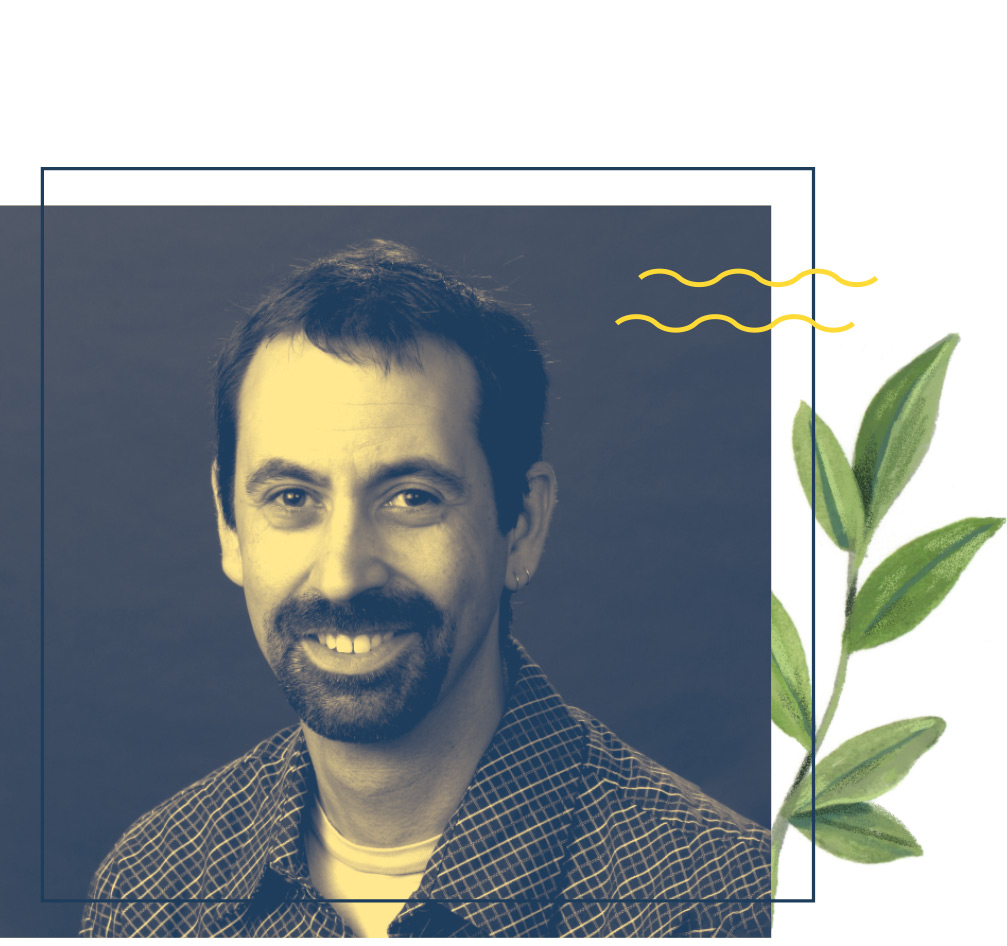
Alain F. Plante, Professor of Earth and Environmental Science
To introduce the complexity and hidden wonders of soil to elementary school students, Alain F. Plante, Professor of Earth and Environmental Science, will often ask, “What color is soil?” Arms shoot into the air, each child eager to declare that soil is brown.
“That’s when I start pulling out samples,” says Plante, who studies terrestrial carbon biogeochemistry— the mechanisms and processes that stabilize organic matter in diverse soils. “They’re red, orange, yellow, grey, and some even have a blueish-green tinge to them. There’s as much diversity below ground—if not more—than there is above ground.”
Plante wants people to pay attention to soil diversity and what soil can teach us about the Earth’s past and sustainability. Alongside air and water, soil is the third environmental medium that sustains life; approximately 80 percent of our food relies on it. Soils are complex ecosystems teeming with bacterial life. Soil is also one of Earth’s historians, able to maintain organic matter (plant and animal material) within it.
“Soil has memory,” says Plante. If a leaf falls from a tree and lands on top of the ground, six months later it will be gone, completely decomposed by microorganisms and bugs. However, if that same leaf is buried in the soil five inches below ground, there will be traces of the leaf for hundreds, potentially thousands, of years.
While Plante is primarily interested in the chemistry, biology, and physics of diverse soils, his work also unearths how soil is impacted by human action. The over-exhaustion of soil from modern human agriculture practices is one of those mechanisms.
There are more bacteria in a gram of soil than there are people on the planet.
“Agriculture used to be a closed system,” says Plante. “That means that what was taken out of the soil was put back in. That isn’t happening anymore. For example, if we grow corn to feed cows, and then the cows produce manure, that manure no longer ends up in the same place where the corn was grown. There is a spatial separation that is breaking a natural cycle of carbon, nitrogen, and phosphorus in agricultural soils.”
This disjointed process and the addition of modern fertilizers are making soils less healthy and less amenable for growth, says Plante. “We all have to recognize that soil is alive. There are more bacteria in a gram of soil than there are people on the planet. These microorganisms are producing the fertility that crops need. With modern fertilizer, what we’ve done is essentially killed off these bacteria and replaced soil’s natural fertility. On top of that, environmentally damaging fossil fuels are needed to make these fertilizers.”
While high levels of the carbon produced by burning fossil fuels in the atmosphere are harmful, carbon in soil is actually desirable. It helps soil retain water and means a healthier ecosystem for growth. Soil contains three times as much carbon as the atmosphere and almost five times as much carbon as all the plants on the planet.
This prowess at trapping carbon can potentially teach us how to better combat climate change. Scientists are assessing the prospect of using soil to capture and store carbon from the atmosphere, called carbon sequestration. If carbon can be successfully stored in the ground, it’s a net positive for soil health and our global environment.
Ignoring the ground beneath our feet can have global implications for our planet, says Plante, who recommends spending more time in its midst. “It’s hard for us to grow respect and appreciation for our environment, our earth and Earth, when we’re not in touch with it in a tactile way. Get out into nature and get your hands dirty.” — Katelyn Silva
From the Ground Up
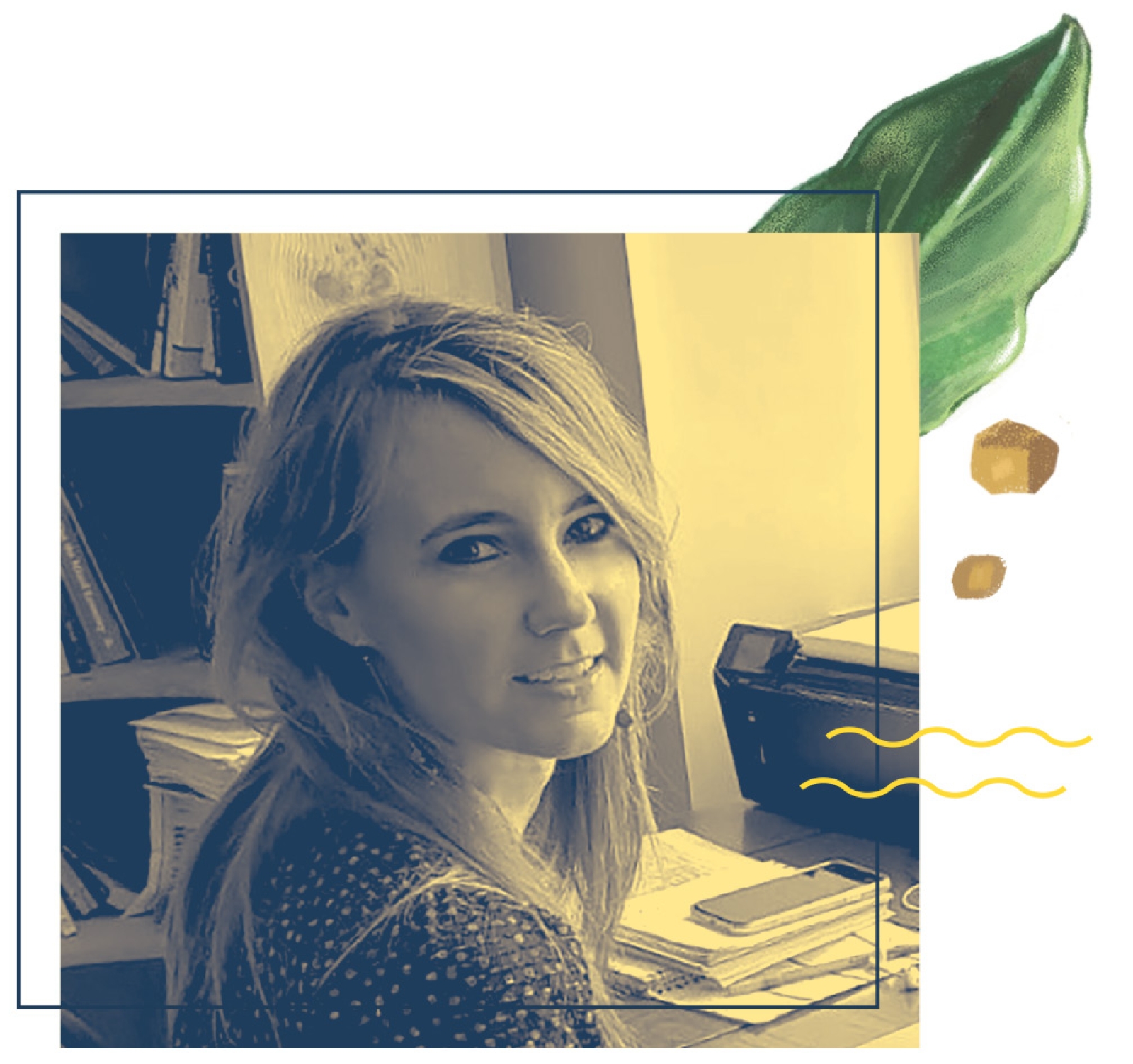
Kristina Lyons, Assistant Professor of Anthropology
The assigning of moral values is not commonly associated with soils, but it is just one of many little-known dynamics that influence modern-day relationships with land and territory, says Kristina Lyons, whose research lies at the intersection of environmental justice and science studies. The assistant professor of anthropology’s manuscript, Vital Decomposition: Soil Practitioners and Life Politics, tackles themes of socio-ecological conflicts, the impacts of the war on drugs, alternative agricultural practices, and science studies in Colombia. She examines the many different environments in which soils emerge as such, are cared for, and defy modern dualisms between “nature” and “culture”: laboratories, greenhouses, forests, and farms in the capital city of Bogotá and the Andean-Amazonian state of Putumayo. Vital Decomposition also builds an intimate ethnography of both small farmers and state soil scientists.
The moralization of soil refers to dominant modes of taxonomic classification established by entities like the U.S. Department of Agriculture—systems that have been imported to Colombia. Ultisol, for instance, a red, clay-based soil, whose name is derived from, “ultimate,” is often “treated as a bad or poor soil because it is the ultimate product of continuous weathering of minerals in a humid, temperate climate without new soil formation via glaciation. These soils are not ideal for industrial agriculture or extensive cattle ranching,” says Lyons. “However, they are amazing in terms of their forestry vocation, for sustaining agro-biodiversity and cultural diversity, eco-tourism, and conservation—practices, knowledges, and Amazonian-based livelihoods that are not valued by extractive-based development models or the imperatives of industrial agriculture.”
These communities propose falling in love with the farm again.
Lyons’ initial interest in soils started in the air. “I was tracking the impacts of aerial fumigation policy of the U.S.-Colombia war on drugs, but I learned from working with non-profits, human rights, and policy-watch organizations that it was very difficult to transform this policy because of the geopolitical influences,” she says. “My visit to an Amazonian farm school really changed my perspective about the research I was doing. Rather than being hinged to death and destruction, my research came to focus on how life is being cultivated and attempts to flourish in the midst of chemical warfare and violence.”
The farmers Lyons met during her research were caught in the middle of extractive economies and armed conflict, and had historically harvested natural resources with little attention paid to replenishment. “These rural communities are attempting to transform their relationships with the territory by unlearning capitalist, industrial-agricultural practices, and instead learning to recolonize their farms with the forest—becoming a part of local nutrient cycles versus extracting from them,” Lyons says.
Lyons’ experiences with the farmers led her to discussions with soil scientists in urban centers who were similarly interested in rethinking extractive relations with their object of study because soil science had become historically attached to industrial agriculture. “It just so happened to be declared the Year of Soil when I was engaged in my long-term fieldwork, which was a natural resource campaign that was organized by the National Geographic Institute Agustín Codazzi in Bogotá,” Lyons says. “It became interesting to me to think about the ontology of soils—about how transversal they are. They pop in and out of different laws and conservation projects, but there is not necessarily a specific policy or environmental interest in the soil and its integral relationships.”
There is more at stake than just money or political representation, Lyons says. “For the indigenous and rural communities I have worked with, alternative Amazonian farming practices are deeply ancestral and innovative. Their allies are not just human neighbors or the elected official of the moment, but instead insects, microorganisms, animals, magical plants, and other beings that are part of the defense of the territory. These communities propose falling in love with the farm again, and fomenting multispecies modes of happiness through dignified lives in the Amazon.” — Blake Cole
Ultimate Terrestrials

Jared Farmer, Professor of History
Climate change can be difficult to grasp, says Jared Farmer, because it’s everywhere and nowhere. Understanding its totality requires geology and history, to name just two disciplines. A self-described “geohumanist,” Farmer knows he can’t tell the whole story of global change. But he can narrate the lives of some of the world’s oldest things, and, in doing so, trace relationships across millennia. That’s where trees come in.
“Trees are geological actors, and they are the ultimate terrestrials,” explains Farmer, a professor in the Department of History. “They shape the earth’s atmosphere but they are rooted in place. And, in a sense, they are rooted in time. There’s an amazing continuity to certain plants. We would recognize many of the gymnosperms that surrounded the dinosaurs. A time traveler would say, ‘Oh, there’s a gingko; oh, that looks like a sequoia.’”
It’s not just that plant species have survived for millions of years. Individual trees have persisted for thousands of years, giving us tangible connections to the earth’s past.
Long-lived trees are emotional access points to hard-to-feel temporalities. “We use trees to depict genealogies, right?” Farmer says. “Darwin used a tree to illustrate evolution, and the Tree of Life and other sacred trees are found in all kinds of scriptures and mythologies. So, on a symbolic level, people already use them to think about long units of time.”
Climate change means our cities and nations will be different. But things can still endure.
Farmer studies old trees in a variety of environments. He has learned that the world’s current oldest have lasted because they are so remote that no humans have interfered, or, paradoxically, because of human intervention.
He says that the figure of the wild millennial tree, untouched and unseen, can give hope about the resilience of life in the biosphere. But for him, human intervention is even more moving.
“I’m interested in stories of caretaking over generations,” he says. “Stories of peoples, societies, and religions caring for the same plant, the same shrine tree, the same canopied churchyard for centuries and in some cases millennia.”
Caretaking is key to Farmer’s project, a manuscript called Survival of the Oldest: Ancient Trees in Modern Times (to be published by Basic Books in 2022). It informs his hopes for the future, too. Most understandings of linear time, whether geologic or Christian or environmentalist, end with cataclysm. Farmer prefers to imagine an open future without an ending.
“I want to emphasize the potential sacredness of elongating our moment in time, and adapting to change,” he adds. “Climate change means our cities and nations will be different. But things can still endure.
“I’m being realistic when I say most of the current oldest trees are not going to make it very far into this period of human-forced climate change,” he continues. “But the future oldest trees of the post-carbon economy—they’re already here. We need to protect them, too.” — Lauren Rebecca Thacker
